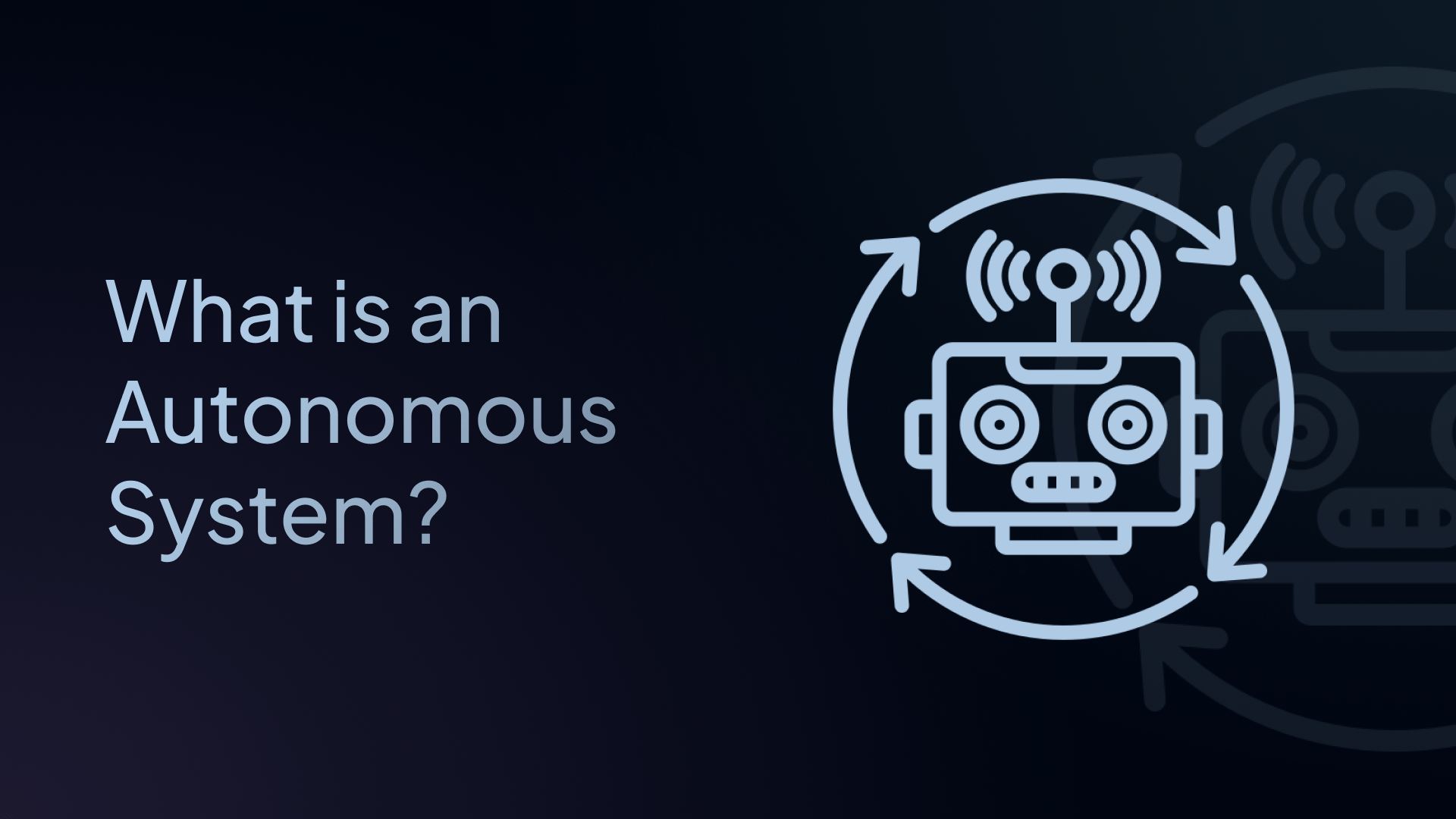What Is An Autonomous System?
Learn what autonomous systems are, how they work, and why they matter for internet routing. Complete guide to AS, ASN, BGP, and network tiers.

Have you ever wondered how your favorite YouTube videos, online games, and streaming services travel across the globe to reach your screen in seconds?
The answer lies in autonomous systems (ASes) – the invisible networks that make the internet work. These systems ensure your data zips around the world efficiently and lands exactly where it needs to go.
But how? That's what we'll explore today.
We'll dive into what autonomous systems are, why they're important, how they make our online world run smoothly, and more.
What is an Autonomous System?
An autonomous system (AS) is a group of IP networks run by one or more network operators that share a common routing policy. Think of it like a postal system – each autonomous system is like a different postal company that handles mail (your data) in its own designated area.
Every autonomous system makes its own decisions about:
- How data moves within its networks
- Which paths data should take to other networks
- What traffic gets priority
- How to control routing with other autonomous systems
For data to travel across the internet, it must hop from one AS to another. It keeps hopping until it reaches the AS that contains the destination. Routers within this final AS deliver the data packet to the correct IP address. It's like passing a letter from one postal company to another until it reaches the right neighborhood.
Each autonomous system controls a specific set of IP addresses and has a unique number that identifies it on the internet. It ensures your data finds the fastest, most reliable path to its destination
What is an Autonomous System Number (ASN)?
Every autonomous system needs a unique identifier called an Autonomous System Number (ASN). These numbers help networks identify each other across the internet.
There are two types of ASN formats:
- 16-bit ASNs: Range from 1 to 65,535.
- 32-bit ASNs: Range from 1 to 4,294,967,295.
The internet started with 16-bit ASNs, but as more organizations needed autonomous systems, the industry expanded to 32-bit numbers to avoid running out.
Public vs. Private ASNs
ASNs can be divided into two categories:
- Public ASNs: Used for networks that connect to the global internet. These are essential for the worldwide routing system.
Every major internet service provider has a public ASN that allows it to exchange routing information with other networks.
- Private ASNs: Used within a single organization for internal networks that don't need global visibility.
How Are Autonomous System Numbers (ASNs) Assigned?
The Internet Assigned Numbers Authority (IANA) distributes ASNs across five Regional Internet Registries (RIRs). RIRs then distribute ASNs to Local Internet Registries (LIRs), ISPs, and organizations in their area.
The five RIRs are the following:
- African Network Information Center (AFRINIC) – African continent.
- Asia-Pacific Network Information Center (APNIC) – Asia-Pacific region.
- American Registry for Internet Numbers (ARIN) – Antarctica, North America, and some Caribbean islands.
- Latin America and Caribbean Network Information Centre (LACNIC) – Latin America and some Caribbean islands.
- Réseaux IP Européens Network Coordination Centre (RIPE NCC) – Central and West Asia, Europe, and Russia.
What is an IP Address Space?
IP address space is the collection of IP addresses that an autonomous system controls and is responsible for delivering data to.
Imagine a country with many postal companies. Each postal company represents an autonomous system – a network operator responsible for delivering data within its own designated service area.
That service area is the IP address space, the full territory containing every street and house the company is responsible for. Within that territory, each house has its own unique address (IP address) so data packets know exactly where to go.
When you send a data packet, the internet looks at the destination IP address (the house), determines which IP address space (the territory) it belongs to, and hands it off to the postal company (autonomous system) responsible for that area. The postal company then delivers the packet to the correct house within its territory.
What are IP Address Prefixes?
IP address prefixes are specific ranges of IP addresses within an IP address space, like a zip code inside a postal company’s delivery territory.
For example, if a postal company (autonomous system) controls the prefix 192.168.1.0/24, that’s like saying: “This zip code covers all houses from 192.168.1.0 to 192.168.1.255.”
Routers use prefixes the same way a postal worker uses zip codes, to quickly sort mail (data packets) into the right part of the territory (IP address space) before delivering it to the exact house (IP address).
This avoids checking every individual address along the way and ensures each packet reaches the right area as efficiently as possible.
How Autonomous Systems Work
Autonomous systems connect with each other through a process called peering, which allows them to exchange routing information. The Border Gateway Protocol (BGP) makes this possible. When two autonomous systems peer, they agree to exchange internet traffic between their networks and share routing information about the best paths.
Here's how the process works:
- Your device connects to your internet provider's autonomous system
- The system receives your request to visit a website
- It checks its defined routing policy to see if it can reach that site directly
- If not, it passes your request to other autonomous systems through established connections
- This continues until your request reaches the website's autonomous system
- The website responds back through the same path
This entire process happens in milliseconds, even though your data might travel through multiple autonomous systems worldwide.
Types of AS Connections
Network operators can connect their autonomous systems in two main ways:
Peering Agreements: Two networks agree to exchange routing information and traffic for free. This usually happens at Internet Exchange Points (IXPs) or through own private connections. It's like two shipping companies agreeing to help each other deliver packages in their respective territories.
Transit Arrangements: One autonomous system pays another to carry its internet traffic and provide routing information to other networks. It's like paying a shipping company to deliver your packages. This ensures smaller networks can reach destinations beyond their immediate connections.
Real-World Example
Let’s say you want to watch a movie on Netflix. After spending 45 minutes deciding – don't worry, we've all been there – you select the movie, and it loads on your screen. Here’s exactly what happens behind the scenes:
- Movie Request: When you click play, your device sends the request through your ISP's autonomous system to Netflix's autonomous system
- Routing Decision: Netflix's clearly defined routing policy decides the fastest and most efficient route to send movie data packets back to your ISP.
- Peering: Netflix and your ISP have agreements to exchange routing information directly, often at Internet Exchange Points or through private connections.
- Data transfer: Netflix's autonomous system sends the movie data packets to your ISP's autonomous system through this direct internet connection.
- Final delivery: Your ISP receives the data packets and delivers them through its network to your home. Your device gets the data and loads the movie.
Types of Autonomous Systems
Understanding the different types of autonomous systems helps you make better decisions about internet connectivity and performance.
Tier 1 Networks
Tier 1 networks are the internet's backbone. These large autonomous systems can reach every part of the internet without paying transit fees because they have settlement-free peering agreements with all other Tier 1 networks. They control routing for massive amounts of data traffic.
These networks form the core of the internet infrastructure and typically serve other smaller networks rather than individual customers directly.
Think of Tier 1 networks as major highways that connect cities. They carry the most traffic and provide the fastest routes between distant locations.
Tier 2 Networks
Tier 2 networks buy internet access from Tier 1 networks, but also peer with other networks for free. Most regional internet service providers fall into this category and use BGP routing to exchange information with multiple autonomous systems.
These networks serve as a bridge between the massive Tier 1 infrastructure and smaller local networks. They're like state highways that connect to major highways but also have local connections through private connections.
Tier 3 Networks
Tier 3 networks primarily purchase internet access from larger networks and rely on other internet service providers for connectivity. Small ISPs, corporate networks, and content delivery networks often operate as Tier 3 autonomous systems.
While smaller, these networks play a crucial role in bringing internet connection services to specific regions or specialized services. They're like local roads that connect neighborhoods to the highway system.
Autonomous System Routing Policies and BGP
An AS routing policy is a set of rules that determines how data travels within a network and to other networks. These policies help control traffic flow, prioritize certain types of data, and ensure secure delivery.
The Border Gateway Protocol (BGP)
BGP is the language autonomous systems use to communicate with each other. It allows networks to:
- Announce which IP addresses they can reach
- Share information about the best paths
- Exchange routing updates with neighboring systems
Without BGP, autonomous systems couldn't connect or communicate effectively. Data transfer would be slow and unreliable, much like a person wandering aimlessly and hoping to stumble upon their destination.
Why Autonomous Systems Matter for Your Business
Your choice of internet service providers and their autonomous systems directly affects your business operations and costs. The routing policy and network connections they maintain can make or break your performance.
1. Impact on Latency
Fewer AS hops mean faster response times for critical applications. If your ISP's autonomous system has direct peering agreements with major content providers through its own private connections, you will experience better performance.
2. Reliability Considerations
Better-connected autonomous systems provide more redundant paths. When one internet connection fails, BGP routing can automatically reroute traffic through other autonomous systems.
3. Cost Implications
Some autonomous systems charge premium rates for transit. Understanding your ISP's peering relationships helps you predict and control connectivity costs.
4. Compliance Requirements
Data traveling through certain autonomous systems may cross jurisdictions with strict regulations. For businesses subject to GDPR, HIPAA, or other privacy laws, understanding which autonomous systems handle your traffic is essential.
How is an Autonomous System Different From Other Network Groups?
Three main characteristics distinguish autonomous systems from other network configurations:
- Unified Control: An AS is managed by a single entity – ISP, government, large enterprise, etc. – and is also viewed as such by other ASes.
- Defined Routing Policy: An AS implements a consistent routing policy for data packets that cross its network. This policy dictates how packets are routed within the AS and how they are exchanged with other ASes, allowing it to optimize traffic flow and manage interconnections more effectively.
- Unique ASN: Each autonomous system is assigned a unique identifier known as an Autonomous System Number (ASN).
Final Thoughts
Now that you've taken a peek behind the curtain, you can appreciate the essential role autonomous systems play in keeping our digital lives humming along. They manage data flow across the internet to ensure everything from streaming your favorite shows to sending an email happens without a hitch.
Next time you enjoy a movie night or a quick Google search, you'll know there's a web of autonomous systems working tirelessly behind the scenes to make it all possible.


